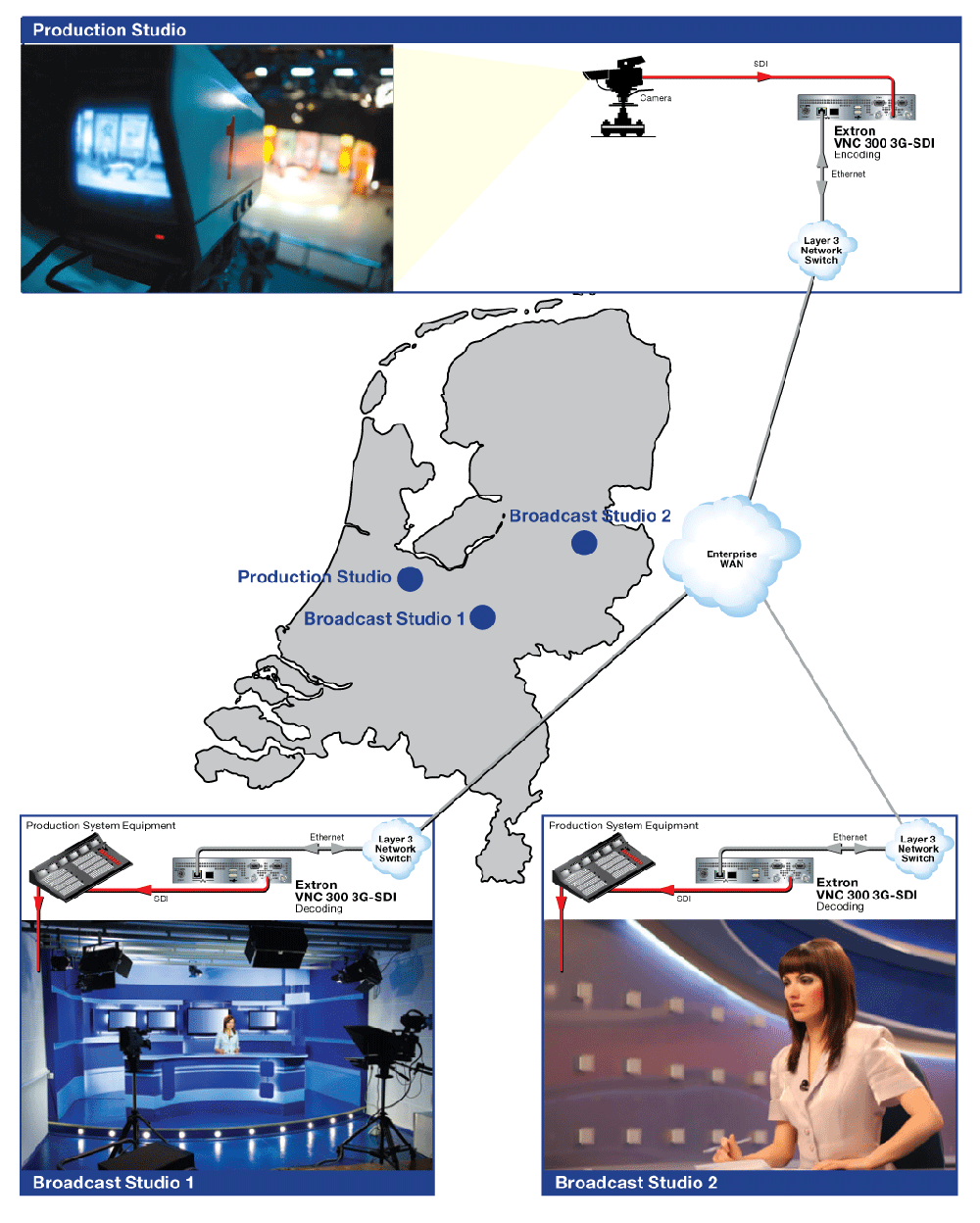Studio – Studio Video Contribution
Overview
Video contributed to live sports, news, or event broadcasts has historically required dedicated point-to-point fiber, satellite, or microwave connections. Frequently this type of connection is impractical or a more cost effective connection is required. Video delivered to the studio is desired to maintain the highest qualities so that a quality production can be prepared before it is broadcasted to consumers. This project reviews Live Traffic Analysis delivered from an outsourced studio to regional television broadcasters.
Room Needs Assessment
Source Inputs
A traffic news presenter from a virtual studio is chroma-keyed over live traffic maps and surveillance video overlays in a special purpose production facility. The produced output is SDI video with embedded audio.
Geography
The broadcaster purchasing the traffic service is located across the country.
Network
A cost-effective, secure network connection supporting up to 20 Mbps bandwidth is required from the traffic news service provider to the regional broadcaster.
Production Input
A broadcast production studio will accept a serial digital video input with embedded audio into a real-time television production environment.
Control System
The network bandwidth must be managed within a maximum bandwidth limit on a DSL connection.
Functional Requirements
Real-time production in the broadcast environment requires that the original 10-bit video resolution and 4:2:2 color be preserved. Event sequencing and interaction is required between the on-air talent in both locations, and low latency video delivery is required to make a natural interaction possible. The DSL connection will not guarantee 100% packet delivery, so the streaming solution must maintain a stable picture and reliable picture quality, even under packet loss.
System Design Solution
Source Input
Broadcast production equipment supplies video traffic news coverage including on-air talent chroma-keyed over traffic condition maps and traffic surveillance feeds. An SDI video signal with 10-bit video depth, embedded audio, and 4:2:2 color resolution is the output signal.
Streaming Video Encoders
Extron VN-Matrix® 300 codecs employing the PURE3® codec interface the video production equipment. SDI with embedded audio is encoded with low, 35 ms delay and the encoder preserves the 10-bit, 4:2:2 color information contained in the serial digital video signal, maintaining unique, editable video frames. The VN-Matrix 300 codec is interfaced to a Local Area Network to deliver the audio/video streams. A variety of compression and bit rate controls exist to allow delivery of the best picture given the available network bandwidth. The combined video and four channels of embedded audio is capped at 15 Mbps.
Network
A Local Area Network switch with 100BaseT network connections is interfaced to the VN-Matrix 300 codec. VPN routers at each studio are interfaced to a DSL network connection with 20 Mbps capacity. The VPN routers maintain security of the VN-Matrix 300 codecs as the video is delivered over a public network.
Streaming Video Decoders
Extron VN-Matrix 300 units decode the audio and video signals rapidly with a 35 ms decode process. Audio and video are synchronized and the low delay of the total encode to decode path ensures that the individuals at both sites can speak with each other naturally and events can be coordinated between sites. An error concealment system in the PURE3 codec preserves a reliable, stable picture even when bit errors, jitter, or lost packets are experienced across the public network. Visually lossless image compression by the VN-Matrix 300 codecs preserve the 10-bit video depth and 4:2:2 color resolution, providing a video signal input consisting of absolute video frames that are editable with the receiving studio equipment.




 Chrome
Chrome
 Firefox
Firefox
 Edge
Edge
 Safari
Safari